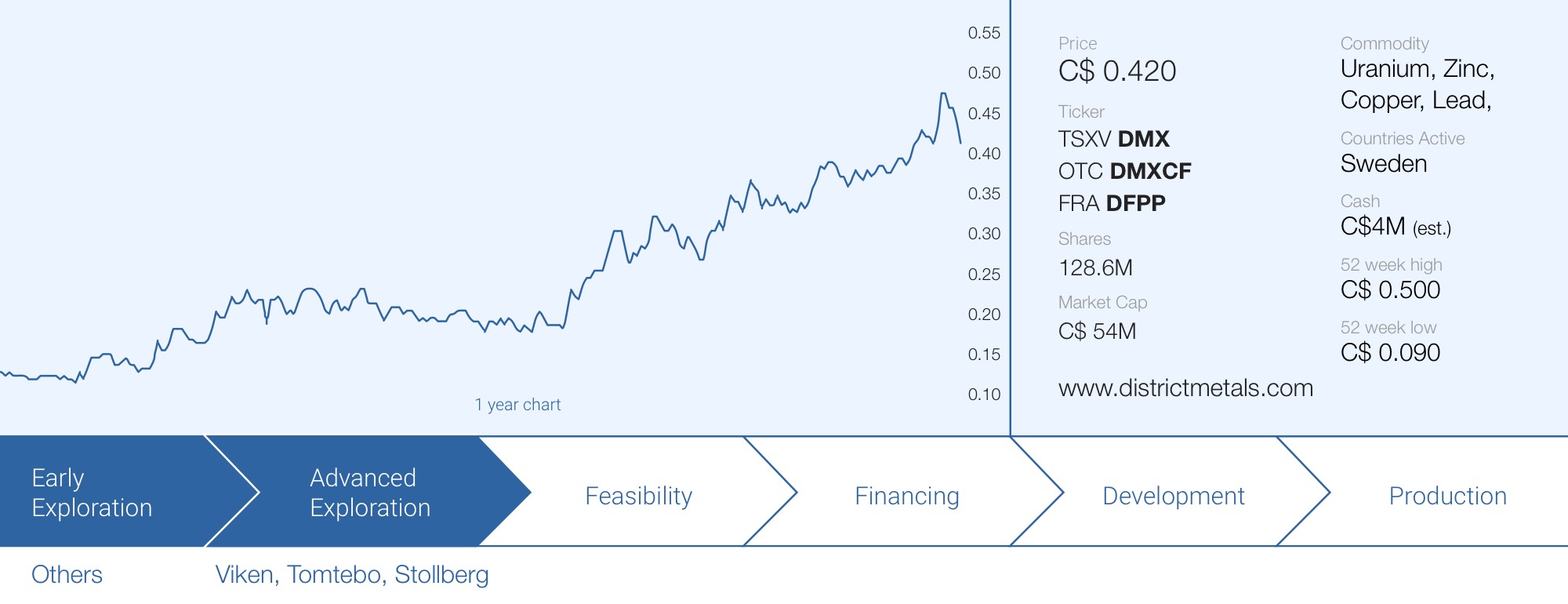
District Metals (DMX.V) is rapidly turning ‘incontournable’ in Sweden as the company has staked another 91,470 hectares of land to explore for vanadium, nickel, molybdenum, zinc, REE and other elements (read: uranium). While the moratorium on exploring and mining uranium hasn’t been lifted yet, the political willingness to effectively look into the matter is strongly increasing as Europe is finally waking up to secure its own domestic source of commodities.
The biggest wake-up call occurred in the energy sector, where European countries and companies suddenly realized they had been relying on a potentially nefarious foreign supply chain that could crumble in moments. This isn’t just related to copper or lithium but also to Uranium. As you may or may not know, there was a coup in Niger last year, and that makes a lot of operators of nuclear power plants uneasy. The country represents approximately 5% of the world’s output, and the majority of the uranium production is shipped to France, which relies on nuclear energy to keep energy costs at a reasonable level.
And it’s not just Niger. The relationship with Russia has been damaged after it invaded Ukraine, and it is understandable that European countries don’t want to rely too much on Kazakhstan. Many countries and companies are rethinking their energy supply chain, and it would be more useful if there would be a decent-sized ‘domestic’ supply of uranium in the European Union. Sweden would fit that bill perfectly, and uranium no longer is a ‘taboo word’.
The lifting of the moratorium appears to be ‘in the works’ and would be a major catalyst for District Metals, but it remains uncertain when the lift could be officially announced.





The newly staked licenses
One of the licenses is the Viken nr 4 license, which massively increases the scale of the Viken project by a factor of 4. There are two small areas where the alum shale is outcropping, but this doesn’t have to be a deterrent as the area is covered by soil and till, and the overlying limestone layer is expected to be thin.
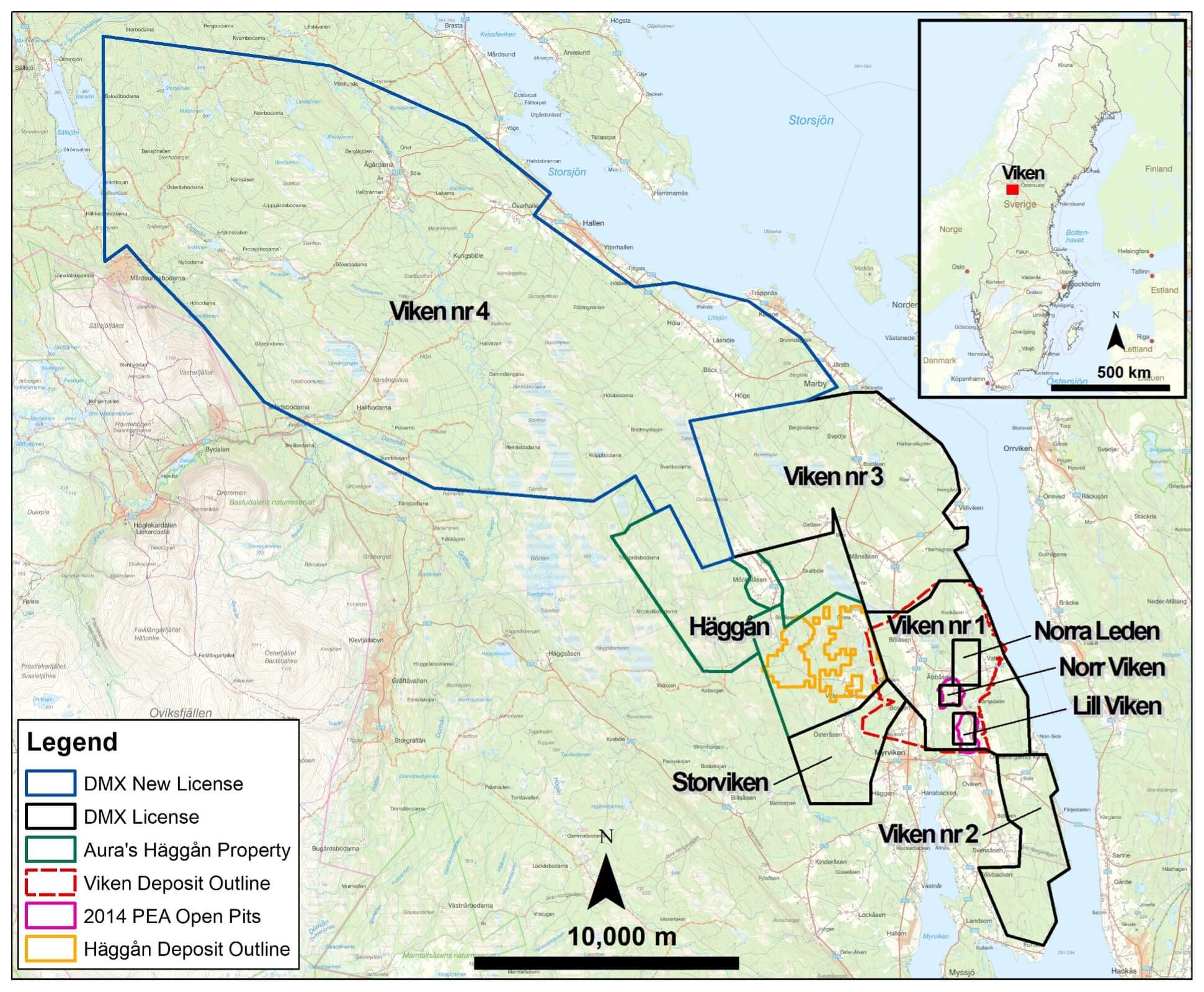
In addition, the company staked multiple other claims just north of Viken, where it has identified additional alum shale mineralization. Alum shales are the host rocks of the Viken deposit, which hosts vast amounts of uranium and vanadium. There still is a moratorium on exploring for and mining uranium, but the Swedish government initiated an inquiry to abolish the ban. We expect more news on this throughout this year as the idea to lift the ban makes its way through the parliament for approval.
The company will initially focus on the early stage ground work on its new licenses, including prospecting, mapping and geochemical sampling. And based on the results from those programs, District can decide to add more land or give up some of the parcels it currently owns. All newly approved claims are in good standing for the next three years.
Considering all the staking activities happen at a low cost, we are fully on board with District’s plans to lock up as much land as possible. While the claims and alum shale type mineralization are prospective for several different elements, the focus will likely move to uranium (with vanadium as a very interesting secondary mineral) if and when the moratorium gets lifted.
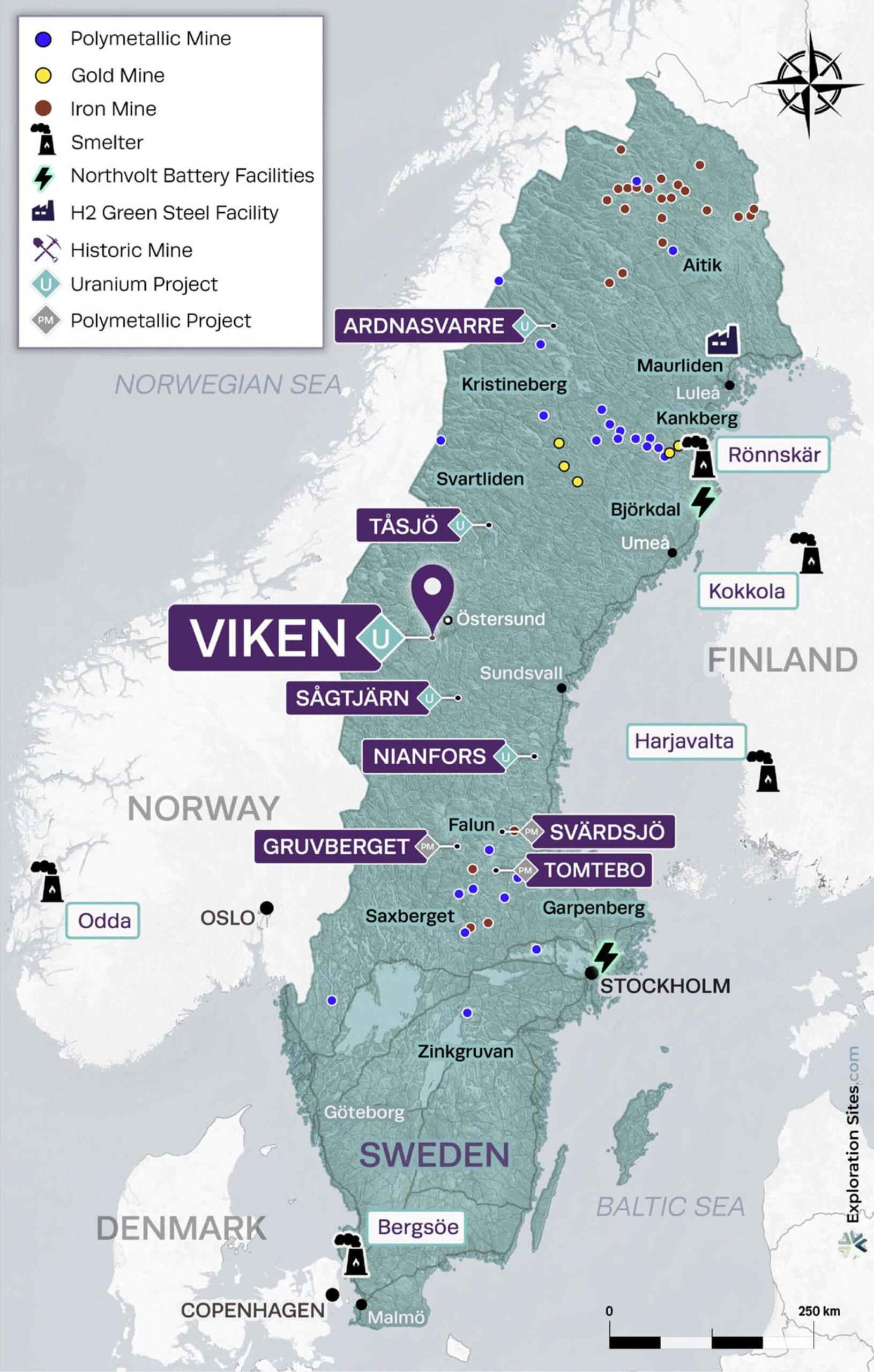
Lifting the moratorium
Earlier this year, the government commissioned an investigation report into lifting the uranium moratorium, and this was expected to be completed mid-May. As this is an internal inquiry/report, there hasn’t been and likely won’t be a press release on it but these types of things sometimes get leaked to the media, and we wouldn’t be surprised if we would be reading vague discussions on it in Aftonbladet. In any case, the Swedish parliament breaks for summer recess on June 26th when Midsummer is celebrated, and it would be great to get an official update from the government before the recess.
If the investigation report is positive, we can expect a bill to be prepared for parliament’s vote, likely after the summer recess. If the bill passes, the administration can take the necessary steps to lift the moratorium (this will likely take a few additional months after parliamentary approval).
The initial work at Tomtebo is very encouraging
Although most of the attention in Sweden and for District Metals is focusing on the Viken uranium deposit, we should not forget the company still has a joint venture with Boliden to explore for base metals in the Bergslagen mining district. As you may remember, District Metals contributed the Tomtebo property while Boliden contributed their Stollberg property to what ultimately will be an 85/15 joint venture after Boliden spends C$10M on exploration.
Both companies have hit the ground running. Boliden and District Metals kicked off a drill program on the Tomtebo project, where both partners wanted to follow up on previously discovered high-grade zinc mineralization. An initial budget of C$2M was approved for 2024, and District Metals was the operator of the drill program, which consisted of almost 2,200 meters in six holes.
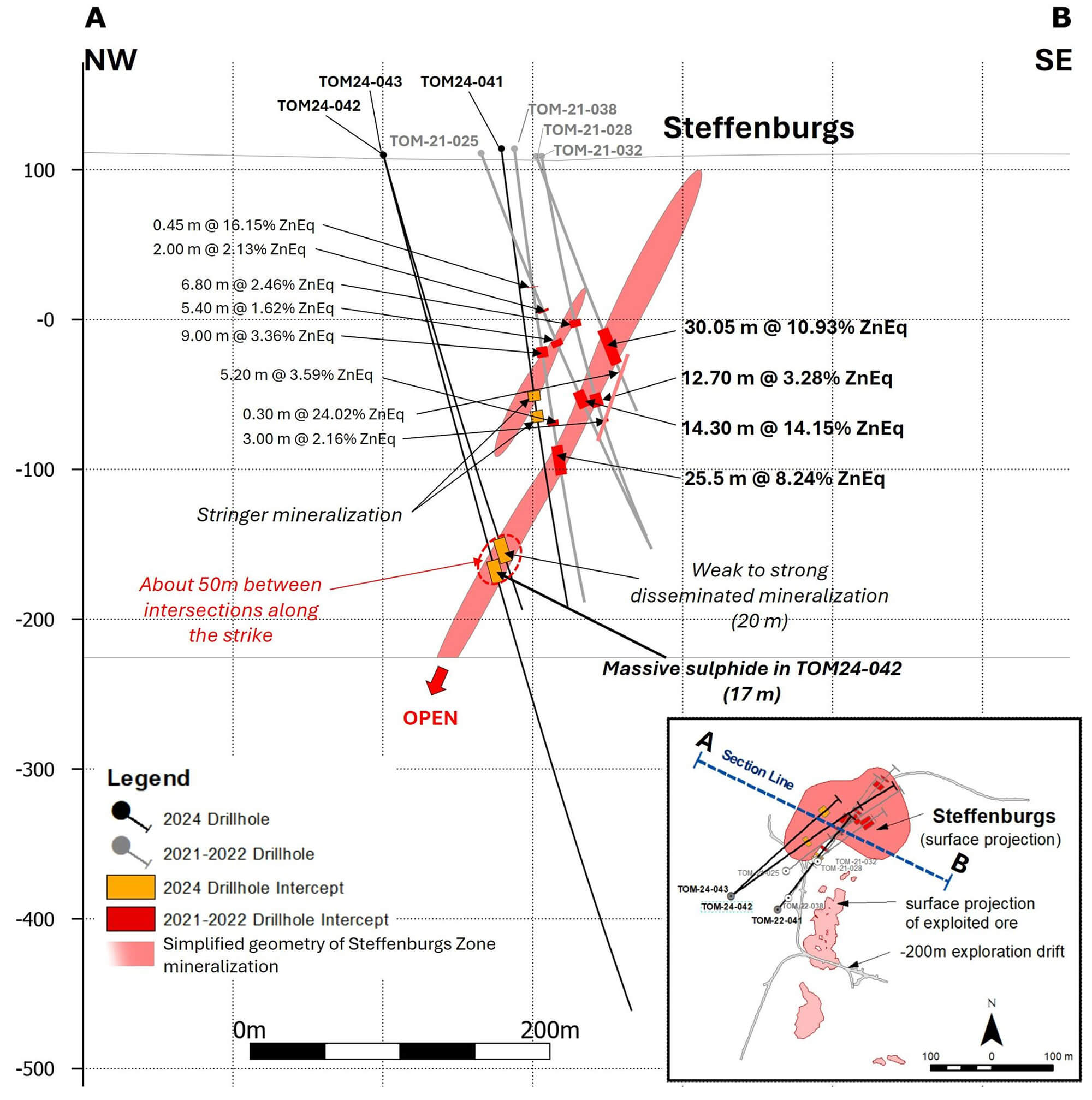
The drill program has been completed, but the assay results aren’t in yet, but District Metals has already released a preliminary update on the drill program as the drill bit intersected strong footwall polymetallic sulphide mineralization at the Steffenburgs Zone where it encountered copper-rich semi-massive to massive sulphide mineralization over a length of 17 meters in hole TOM24-042. Meanwhile, holes 41 and 43 also encountered copper-rich sulphide mineralization over a length of respectively 60 meters and 21 meters.
On top of that, Boliden’s proprietary three component downhole electromagnetic survey showed in-hole and off-hole electromagnetic conductors which likely represent sulphide mineralization. The entire exploration update is a good read, and we would recommend you to read the update in its entirety here.
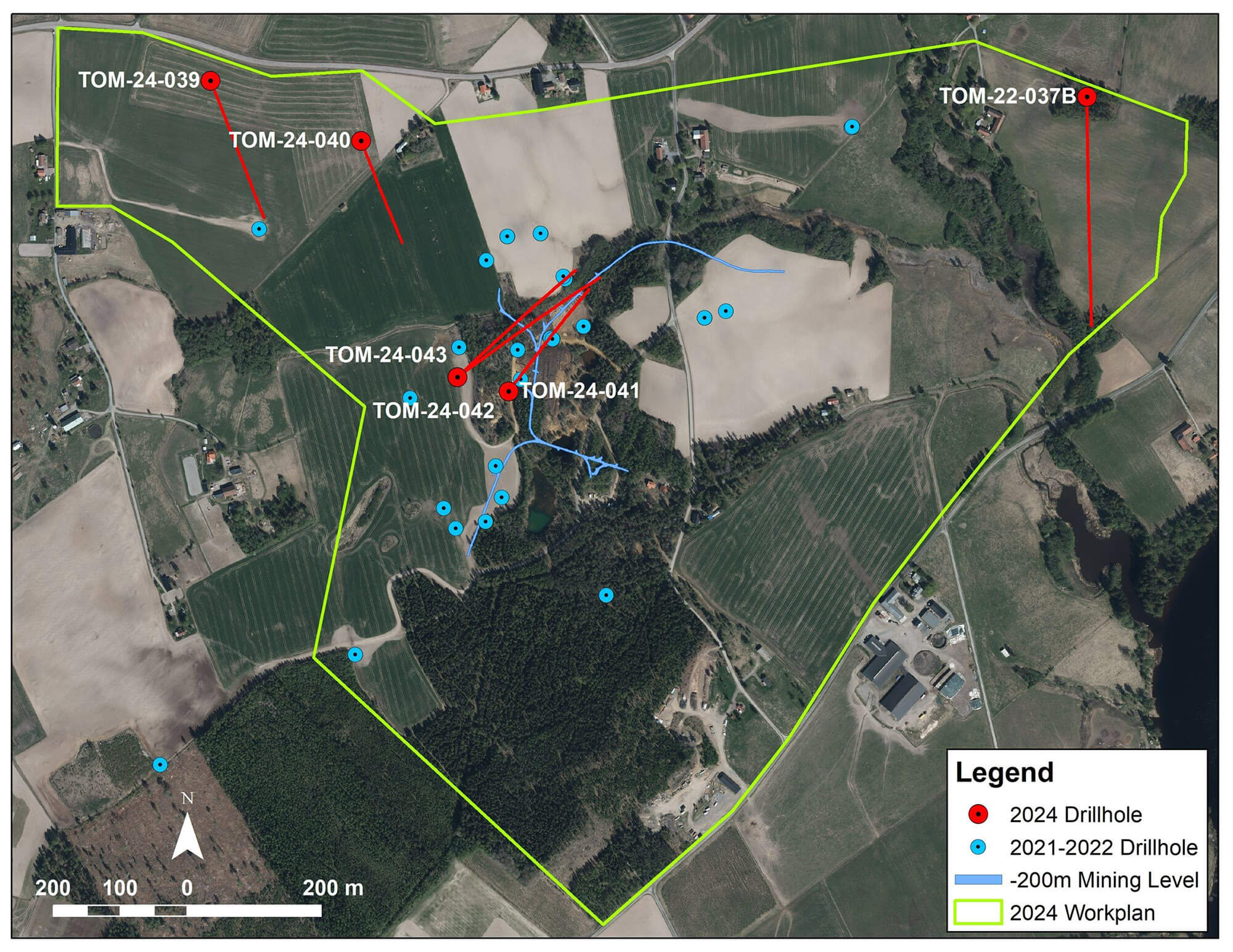
The timing couldn’t be any better as the zinc and copper price have been on the rise and although this still isn’t fully reflected in the share prices of base metal juniors, we hope the market will start to pay attention soon. The majority of District Metals’ current valuation is underpinned by the ownership of the Viken uranium deposit but it would for sure be nice to have two irons in the fire.
The Tomtebo drill results will likely be released in late-June or early-July, and after the summer, the District/Boliden joint venture will likely drill the Stollberg project, where a relatively small drill program of just over 2,000 meters is planned.
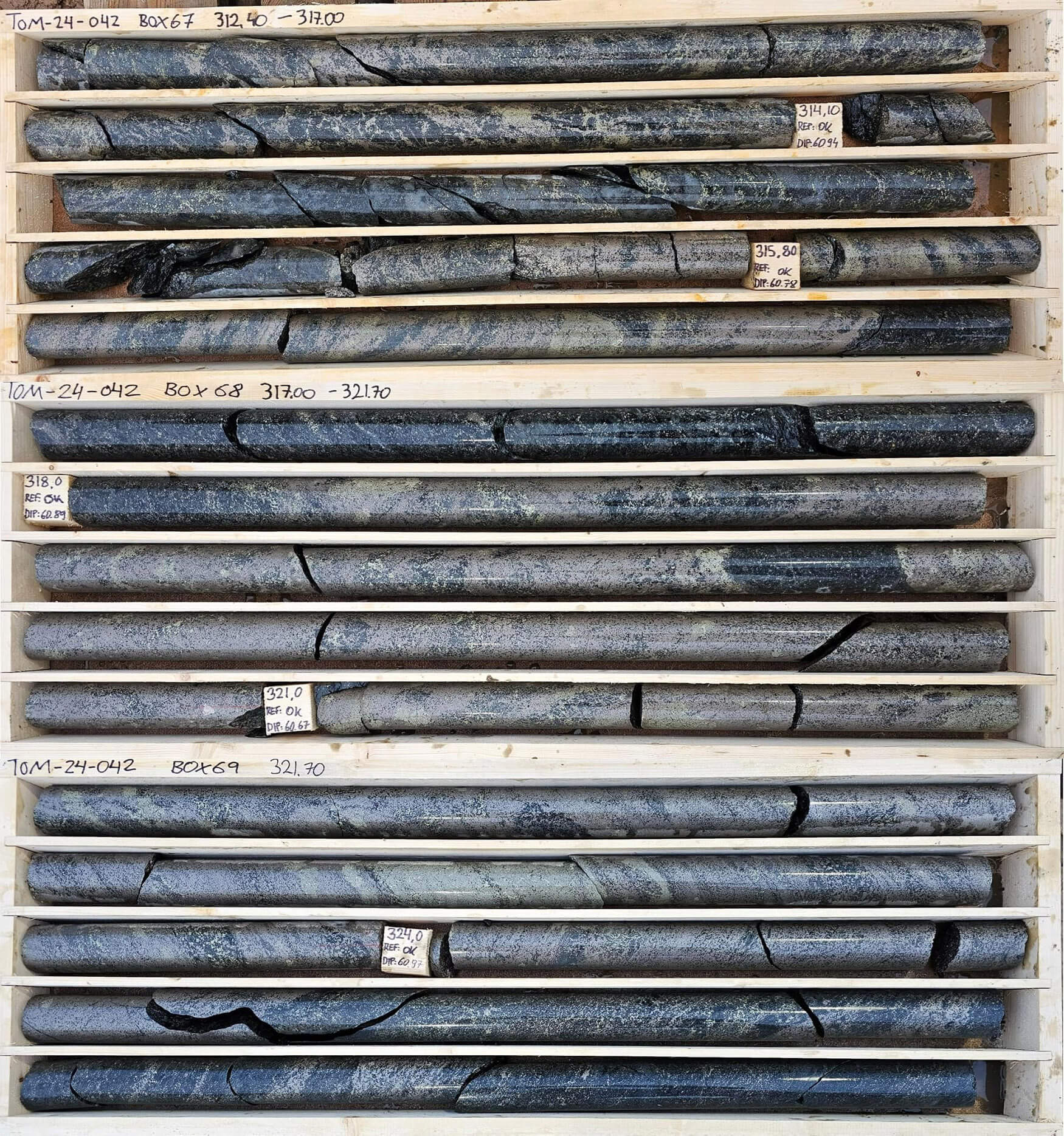
District’s financial situation
The company still has to file its Q1 financial statements, but there’s little doubt District is still in excellent financial shape. At the end of 2023 the company had a positive working capital position of approximately C$2M and subsequent to the end of December it raised C$4.51M in gross proceeds by issuing 20.5 million units at C$0.22 per unit. As the Tomtebo work is funded by Boliden, District’s only expenses are the staking costs for the new land packages and the G&A. We expect the company to have ended Q1 with a positive working capital position of around C$5M.
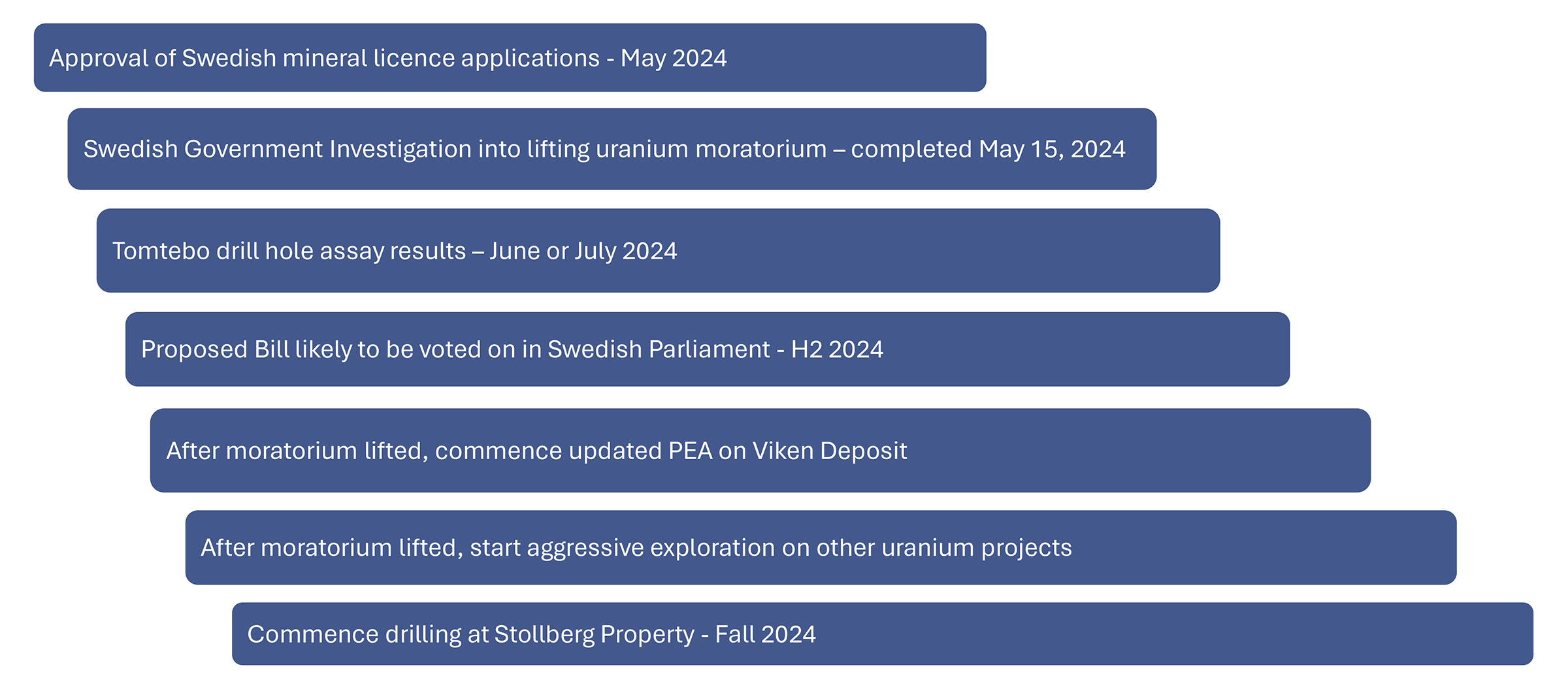
Conclusion
The market clearly agrees with the company’s change of plans by putting Tomtebo on the backburner as part of a 15/85 deal with Boliden, in favor of focusing on known uranium deposits in Sweden (Boliden is not involved in District’s uranium plans).
There is an existing historical resource calculation at Viken (well, there are two, with the 2014 historical resource being the most recent one) which indicates the presence of in excess of 1.15B pounds of uranium in the indicated and inferred resource categories (1.145B pounds are in the inferred category) as well as 2.2B pounds of nickel. A 2010 historical resource calculation also included the vanadium (16.7 billion pounds in the inferred resource category) and molybdenum (1.52 billion pounds in the inferred resource category. These alum shales are low-grade, but very consistent in nature making them pretty predictable.
But first, let’s see if and when the Swedish government will officially lift the uranium moratorium. At the current market cap of C$54M, representing US$0.03 per pound of uranium in the ground (using the 2014 resource calculation), District Metals still isn’t expensive based on the historical resource calculations.
Disclosure: The author has a long position in District Metals. District Metals is a sponsor of the website. Please read our disclaimer.
